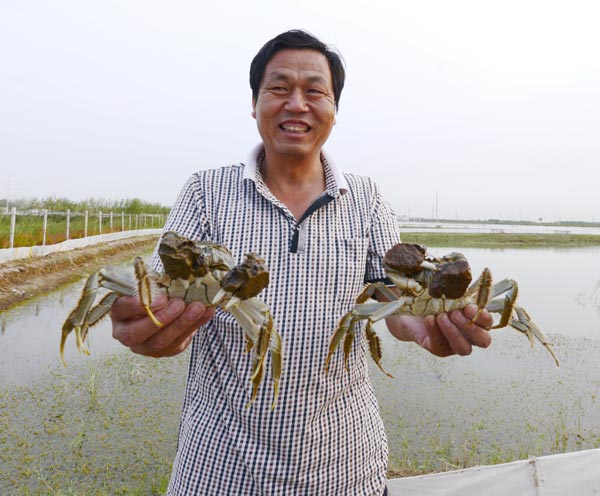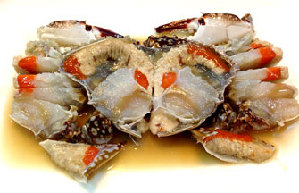Finding the green side of crabs
 |
|
Farmer Liu Yuanju is happy with this year's harvest at his crab farm in Dongying, Shandong province. Ju Chuanjiang / China Daily |
Liu Yuanju and his wife closed their small rural restaurant in 2004 and started to raise crabs in a small pond in their backyard. Almost 10 years later, their business, in Dongying in East China's Shandong province, has expanded into a crab farm that can bring in 2.5 million yuan ($408,500) a year.
The hairy crabs the couple is raising are named after their furry claws, and they are among the Chinese people's favorite dishes. Usually available in the market in autumn, these crabs have reached prices of more than 100 yuan each.
With an annual output of about 5,000 kilograms, the crab farm of 6.7 hectares brings Liu more than twice the income he earned from the restaurant.
"The larger the crab, the higher the price," Liu says. "We took training lessons offered by the local government to learn the basic feeding for hairy crabs, such as the proportions of carbohydrates, fat and protein."
As one of the eco-friendly agricultural businesses gaining momentum in recent years, raising crabs is in line with the Dongying government's vision to develop its economy at less cost to the environment.
After being endorsed by the central government as an eco-efficient economic zone, Dongying has been searching for a route toward economic prosperity and ecological preservation.
The delicate balance between the two had been one of the questions challenging decision-makers in Dongying, says Xue Rongjian, director of the Yellow River Delta Eco-Efficient Economic Development Zone.
"In terms of agriculture, that means whatever projects we are planning to roll out, we have to consider if they are ecologically friendly - or, if they could potentially damage the ecological balance, whether that damage could be controlled."
|
 |
 |
















